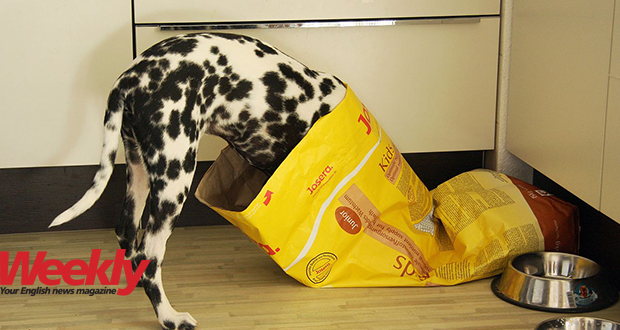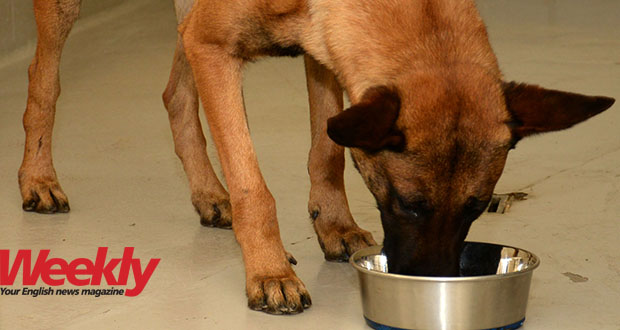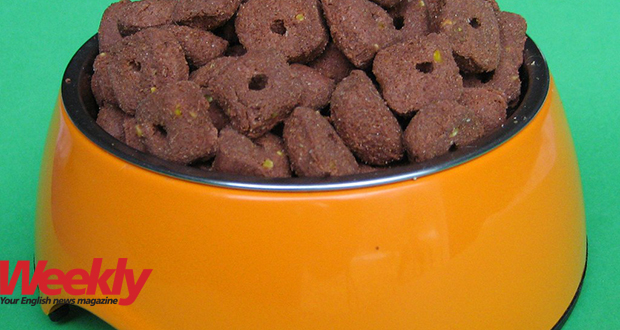Publicité
Pet food: What are the best options for your dog?
Par
Partager cet article
Pet food: What are the best options for your dog?

It is no secret that longevity and good health begin with good nutrition, and this is also true for pets. Pet foods now come in many different sizes, shapes and textures, and with the number of options available on the market, figuring out which diet strategies will keep your pooch healthy and happy can be tricky.

Do you feed your dog cooked food? Kibbles? Canned food or raw food? Regardless of what your dog eats, it’s always a good idea to look at the different options and find out whether your pet is getting a good nutrition, because that is the first step to making sure that s/he stays healthy.

Cooked meals
A new trend has recently started in some parts of the world, where pet owners are beginning to feed their dogs raw meat. Just as more and more people are trying to turn away from processed foods, they believe that pets should also move away from conventional pet food and turn to a more traditional raw meat-based diet. However, many experts strongly warn against the idea, arguing that the digestive systems of domesticated dogs are not fit to process raw meat. Indeed, domestic dogs are very different from wild carnivores because they have been evolving alongside human beings for about 30,000 years now and therefore, their diet has been shaped by humans’ food and environment. Moreover, according to experts, raw meats can cause pets to get sick from salmonella, listeria, parasites or E. coli.
If you prefer to feed cooked food to your dog, it’s always best to consult your vet first to make sure that the meal contains the balance of carbohydrates, protein, fat, vitamins and minerals that a dog needs, and that you are not feeding your pet the wrong types of food (see hors-texte for the full list). An easy cooked meal would be rice or wet bread mixed with some cooked meat and some vegetables like sweet potatoes, pumpkin, spinach, green beans, cantaloupe, brussels sprouts and carrots, which are very good for dogs’ health and contain plenty of vitamins, minerals and fibre. However, dogs can develop allergies to certain foods, so always keep an eye on them – especially if you are introducing them to a new diet – for reactions like itching, irritated skin, vomiting and diarrhoea.
Dry vs wet foods
Kibbles and canned foods are highly recommended for pets because they are tailored to provide all the right nutrients that the dog needs. Dogs’ kibbles tend to contain more carbohydrates than canned foods because they include cereals such as wheat, corn or barley. Not only do dry foods provide carbohydrate, protein and fibre, but many of them also contain ground meat and fats that have been mixed together with the dry ingredients. Protein is very important in a dog’s diet as it helps to strengthen their muscles, skin and coat. Kibbles also beat canned and cooked food in terms of affordability and convenience. Dry foods are also much easier to store and serve; however, it is a good idea to put out a separate bowl of water to keep your dog hydrated because dry foods do not contain much water. You can also add a little bit of water in the kibbles to make it easier for the dog to eat, especially if it is sick. It is also believed that dry food is better for pets’ teeth than wet food, which often leads to plaque buildup.
On the other hand, canned foods are more palatable for pets as they often contain fats, gravy, and other flavourings that dogs love. Canned foods also have more texture, are easier to consume and give a mouth-watering aroma that dogs are unlikely to resist. They also contain more proteins and fats than dry foods, although they are more expensive and do not last as long as dry foods in storage. However, if you don’t mind spending the extra money for your pooch, you can also mix canned food with some home-cooked rice, bread or some kibbles.
Frequency of meals and new diets

If you have a medium or large dog, like Labradors, German Shepherds, boxers, bulldogs and terriers, it is best to feed it twice a day – in the morning and early evening. If you feed them more than twice, it can lead to weight gain. On the other hand, small dogs like poodles, griffons, Cavalier King Charles, Chihuahuas and Dachshunds can eat three small meals a day because they tend to metabolise their food faster than bigger dogs.
If you want to switch your dog’s food to a cheaper or more nutritious and healthy diet, the process has to be gradual to avoid any gastrointestinal distress. For example, you might want to start by feeding your pet 20 per cent of the new food with 80 per cent of the old diet for a few days and then move to feeding 40 per cent of the new food with 60 per cent of the old one and so on until the whole diet is changed. This may take a few days or weeks. However, it is always best to check with your vet to make sure that you are feeding the right type of foods to your pet.
Superfoods and treats:
Eggs (Preferably cooked to avoid bacteria like salmonella or E. coli)
Peanut butter (in small amounts on its own to avoid weight gain or as garnish)
Cheese
Watermelon
Apples
Bananas
Pears
Blueberries
Foods that you shouldn’t feed to your dog:
Xylitol (a sugar alcohol used as a sweetener for products like breath mints, baked goods, cough syrup, chewing gums, mouthwash and toothpaste)
Avocado
Onions and garlic
Coffee, tea, and other caffeine
Grapes and raisins
Chocolate
Macadamia nuts
Too much dairy products
Large amounts of salt and salty foods
Yeast dough
Fruits with large seeds
For more views and in-depth analysis of current issues, Weekly magazine (Price: Rs 25) or subscribe to Weekly for Rs110 a month. (Free delivery to your doorstep). Email us on: weekly@lexpress.mu
Publicité
Publicité
Les plus récents






